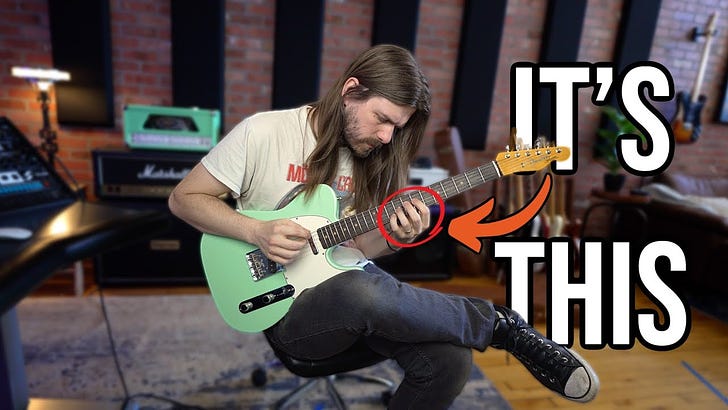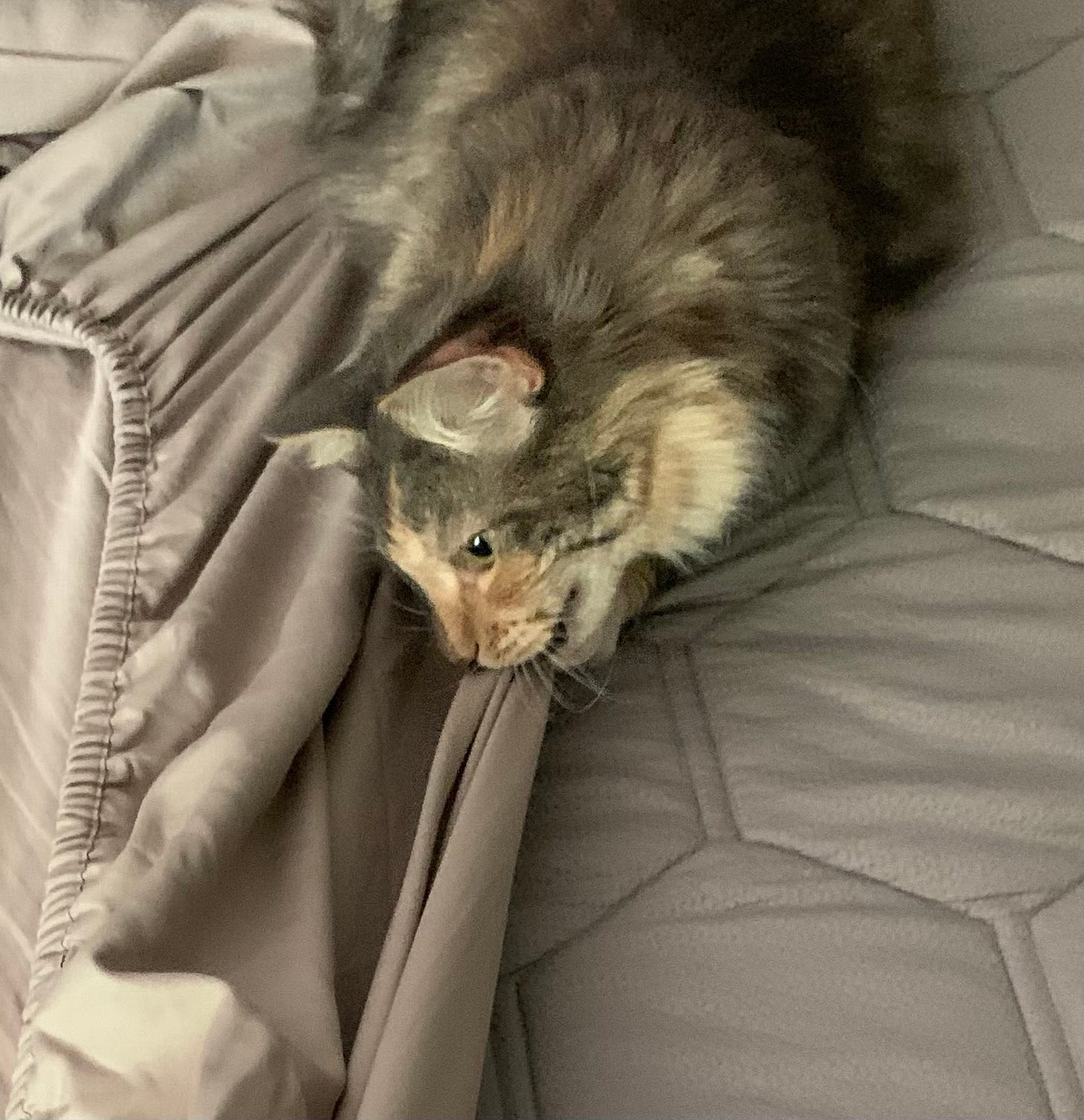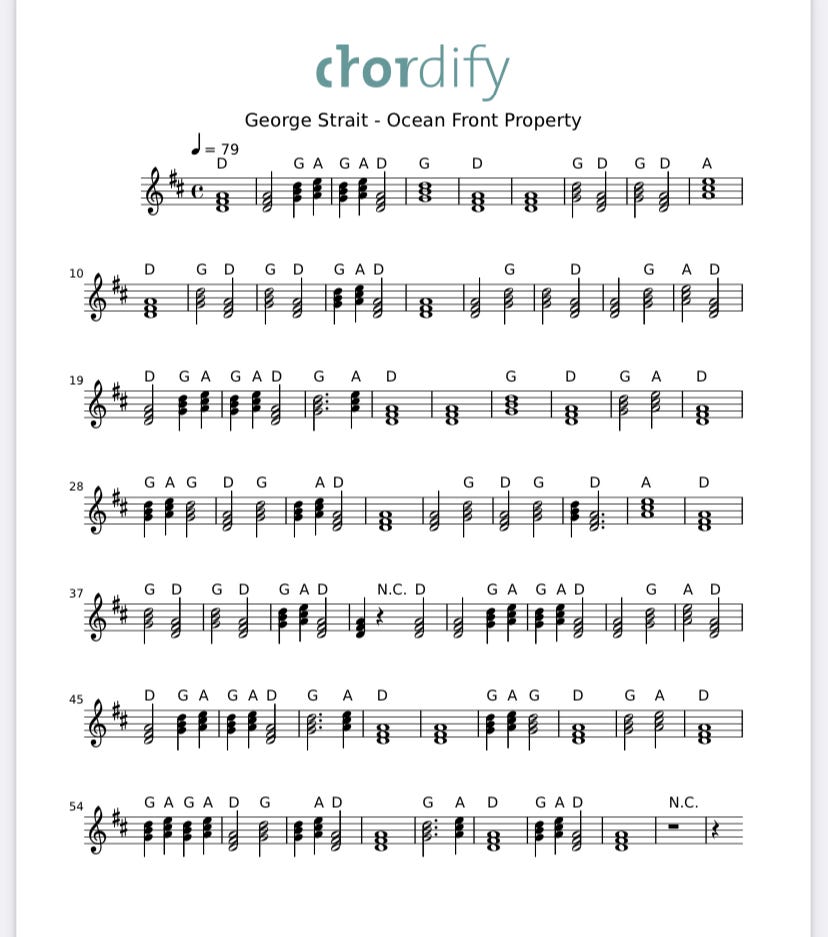Welcome to the new format for Regular Friday Posts! We’ll be coming up on two years of Michael Acoustic in late September, so it’s a good moment to reflect and reset some goals I’ve had for this newsletter. Yesterday we began that process with changes to what I’m going to call “The Famous Thursday Post”. That title is sort of a riff on a fabulous song by one of my favorite singer/songwriter artists. Leave a comment if you caught the reference and I’ll reveal it to all in next week’s edition of The Famous Thursday Post.
Some of the following is a slightly different take on what I posted yesterday, but as I’ve observed, I think I have a community of Thursday readers, and a somewhat overlapping community of Friday readers. Which is great! I want to make sure I’m writing for my readers, not just myself, and if your interests are more toward one or the other I want to meet those interests more specifically. If you’re reading both day’s posts, I’m even more excited to see you on each!
So we’ll continue with the rest of the process today in what I’m going to call from now on “The Regular Friday Post”. The Famous Thursday posts will concentrate on songwriting, recording, production and commercial release, and related topics. Now, the Regular Friday Posts will be more oriented toward playing and performing on guitar (usually acoustic, but there is great value in playing both electric and acoustic guitars, as your budget may allow), along with a renewed emphasis on music theory, a topic which I’ll try to keep at a pretty basic level. “Pretty basic” means a level at which you can communicate with other performers (not only guitarists) in the “language” of music. If you would like to see a bit more depth to the music theory parts, let me know and I’ll create a deeper dive section specifically for that, and include pertinent links. There will likely be some degree of overlap between the two day’s posts, but I’ll try to minimize, or at least call attention to that overlap where possible.
Disclaimer: This Substack is free, always will be, and I receive no compensation or other benefit (except the unsolicited, occasional, and much appreciated shoutout from readers and other Substackers!) from any of the people or companies or products I link to or write about. Note some images and other material may be copyrighted by the original author or composer and appear here under the “Fair Use” doctrine. Link: Fair Use Note also I do not use any form of artificial intelligence in writing Michael Acoustic. It is possible that some external sources that I link to or quote, do use or contain AI generated material.
Michael Acoustic
Today I want to talk a little about playing, and then I'll share a video with you that highlights some really useful concepts that combine some of the things we’ll talk about in this post and in future posts. Beginning next Friday this section will move to the top of the post and the normal other stuff will be below the disclaimer.
So, playing. Let me start off by asking a rhetorical question. Who are you playing for, that is, who is your audience in the moment? Is it just you? Playing songs just for yourself, IMHO, is the best way to practice. This may not be true when first beginning to grasp and master the basics of chords and chord changes. But when you’ve reached the point of changing chords on the beat, learning some chord extensions and variations, and learning some basic strumming, flatpicking and maybe some fingerstyle techniques, you’ll likely want to put those skills into practice by playing songs. Many, if not most of the seasoned guitarists reading this will be thinking, “No kidding, Michael!”, and have already reached or moved beyond playing songs simply for practice. I get that, but the question remains valid.
Are you playing for friends? With friends? Jamming? Learning a song together? Playing a solo gig at a bar or a coffee house? Busking? Playing in a church band at a worship service or with a group at a gig? Every answer may require, or naturally lead into, a different style of play.
What are the things that change for you as you move through each of the above situations suggested by those questions? Playing solo allows you the freedom to change tempo, change keys, explore non-diatonic chords and arpeggios and solos, and be mostly unconcerned with how you’re approaching the song. You can experiment or customize your songs or songs you’re covering to your own style and abilities.
Playing with others is different. Players have to communicate all of the things a solo player doesn’t have to. And we communicate with other musicians in the language of music, which is rooted in music theory. Don’t let that get in the way of playing with others, just learn at least the basics of the language, and you’re no longer a stranger in a strange land.
So, I really like the approach taken in this video by Mr. Robert Baker. I’ll let him show you what I mean, and then we’ll start a discussion.
I really hope you’ll take the seven or so minutes this lasts. There are a couple of things I really like. First, he doesn’t start off with 30 seconds or so of self love by shredding some stuff to impress you with his skills. I see a lot of that in YouTube “instructional” videos, and I just exit immediately. He’s on an electric, but much of this applies as well to acoustic guitar playing, and if your guitar has installed electronics or a soundhole pickup, or is even just mic’d you can create some or many of the effects he demonstrates. Even more so with electronics onboard the acoustic - and nothing stops you from adding a pedal chain before the amp and using the amp’s effects send/return circuit, or using an amp’s built in effects. Next, he’s going to talk and demonstrate exceptionally well some of the things we’re talking about here. First, if you’re soloing, or if you’ve communicated what you’re going to do with your bandmates because you’re playing with others, he talks about not shredding, but rather leaving spaces between notes or short riffs. He talks about the importance of dynamics, and phrasing!! Both concepts are so important to adding emotional depth and communicating that through your playing. He emphasizes what can be done with chords to employ dynamics and breadth and arpeggiating (? Is that a word? - you know what I mean..) instead of shredding just because you can.
I think that’s a great way to think about the songs that you play, whether solo or with others, and if with others, how to incorporate the concepts of creating space with timing intervals and dynamics within riffs or under lyrics as you communicate with them beforehand.
So, lots to unpack there and we’ll pick up on that theme next week!
Thanks new subscribers! Mika, the Cat, welcomes you!!
This Week’s Conversation With Mika:
Me: What are you doing?
Mika: Changing the sheets.
Me: You’re biting the sheets
Mika: That’s how you do it! Idiot…
Me: sigh…
Links:
Just a couple today, from Mr. Griff Hamlin of Blues Guitar Unleashed:
Other Voices:
I wanted to post this link to Substack writer Mr. Ted Gioia yesterday, but Mr. Goldberg’s playlist went all “Squirrel!!!” on me and my attention span being what it is, I listened to it, loved a song, and went with it. So, this is less a “Playing” themed link, and more of a “Biz” link, but I thought it was important, so here we are. I’ll do better…
Ed. One caveat, although this post is pretty extensive, it is only partial, with the remainder behind a paywall for Mr. Gioia’s paid subscribers.
A Song To Play:
(Ed. No more clues and guessing! The “Bonus Round” is now the “A Song To Play” section and I’ll include a basic to intermediate level song with a Chordify chart and lyrics. I’ll explain why below. You may have noticed there’s no “clue” in the substitle. For now I’m just using that space for some rando lyrics that pop into my head - you can guess or JFGI it. I’ve learned “JFGI “ is kinda: “Just * Google It” - LOL…)
Ocean Front Property
““Single by George Strait from the album Ocean Front Property
B-side"My Heart Won't Wander Very Far From You" Released December 22, 1986 Recorded September 22, 1986 Genre : Country
Label: MCA Songwriter(s): Dean Dillon, Hank Cochran, Royce Porter
Producer(s): Jimmy Bowen, George Strait
"Ocean Front Property" is a song written by Dean Dillon, Hank Cochran and Royce Porter and recorded by American country music artist George Strait. It was released in December 1986 as the first single and title track from his album of the same name. It was a number-one hit in both the United States and Canada.[1] On the 45 record single, "My Heart Won't Wander Very Far From You" is the B-side.
Content
The narrator tells his soon-to-be ex-lover that he will not miss her when she’s gone, ever take her back, or be haunted by her memory. He then reveals the sheer untruth of his claims and likens the impossibility of his moving on to that of obtaining ocean front property in the landlocked state of Arizona.”
Credit: Wikipedia Link: Ocean Front Property
Chord Chart (sorta - see note below)
Key of DMajor, 4/4 time, pretty slow tempo at 79BPM - kind of a typical country ballad, only 3 chords DMaj, GMaj, AMaj - the I, IV, and V of the key of DMaj, but made so beautiful with the keys, lap or pedal steel, and violin(?) underneath.
Lyrics (from Genius)
[Verse 1]
If you leave me, I won't miss you
And I won't ever take you back
Girl, your memory won't ever haunt me
'Cause I don't love you, and now, if you'll buy that
[Chorus]
I got some ocean front property in Arizona
From my front porch you can see the sea
I got some ocean front property in Arizona
If you'll buy that, I'll throw the Golden Gate in free
[Verse 2]
I don't worship the ground you walk on
I never have, and that's a fact
I won't follow or try to find you
'Cause I don't love you, and now, if you'll buy that
[Chorus]
I got some ocean front property in Arizona
From my front porch you can see the sea
I got some ocean front property in Arizona
If you'll buy that, I'll throw the Golden Gate in free
I got some ocean front property in Arizona
From my front porch you can see the sea
I got some ocean front property in Arizona
If you'll buy that, I'll throw the Golden Gate in free
[Outro]
Yeah, if you'll buy that, I'll throw the Golden Gate in free
Ed. While I’m not including the Ultimate Guitar chord charts because it’s a paid subscriber service and I don’t want to get sideways with them since I subscribe, there are plenty of them there for this song. But with the Chordify “chart” and the lyrics, it’s pretty easy to create your own chart - paste the lyrics into an editable .pdf or other word processing format, insert a blank line between each line of the lyrics, then listen to the song and insert the chords in the blank lines at the places where there are chord changes - use the Chordify chart as a guide.
(Ed. Note - I may have featured this song as part of the old Bonus Round, but I don’t think I added the chord chart or lyrics. So, about that “chord chart” thing - Chordify charts do show the chords but don’t show the chord changes relative to the lyrics. I assume without knowing they’re avoiding copyright infringement by doing that, though it may be just that algorithm doesn’t distinguish that finely. Probably avoiding copyright issues is my guess. Same with Genius (source for lyrics). By only displaying the lyrics without the chords associated with lyrics at chord change points they’re probably avoiding infringement issues. That’s likely because they’re commercial businesses operating on ad money or subscription. There are seven different chord charts - chords with changes appropriate to lyrics - on Ultimate Guitar, so while a subscription based site, they avoid copyright infringement because all content is user created, rather than commercially provided, so they can claim the “Fair Use” copyright exception for educational purposes. Like I am.)
Shameless self promotion section
My song is out! “Long Road Back” (click on link for streaming options)
Looking Ahead: Working on the second single now. Yesterday we looked a bit at how I’m recording that song, and we’ll talk more about the process and how it’s somewhat different than “Long Road Back”. Link: Yesterday's Famous Thursday Post
(Ed. Today’s “What I’m Listening 2” playlist is a bit different. Local Funk/R&B band Funky Unkle’s album below includes some friends who are exceptional musicians - Mellad Abeid, my guitar instructor who plays guitar on “Long Road Back”, and Kenny Sager, who is the drummer on the song. Also Funky Unkle’s bass player, Ash/Mercy. Both Kenny and Ash/Mercy and another fabulous musician and my great friend, “Pastor Mike”, played in a church band I played in for awhile before I left to take more lessons, college music theory classes, and to “get better”.🤣)
What I’m Listening2:
Cheers and keep playing!!
Michael Acoustic
“It’s never really final - you just run out of things you can bear to change…”







